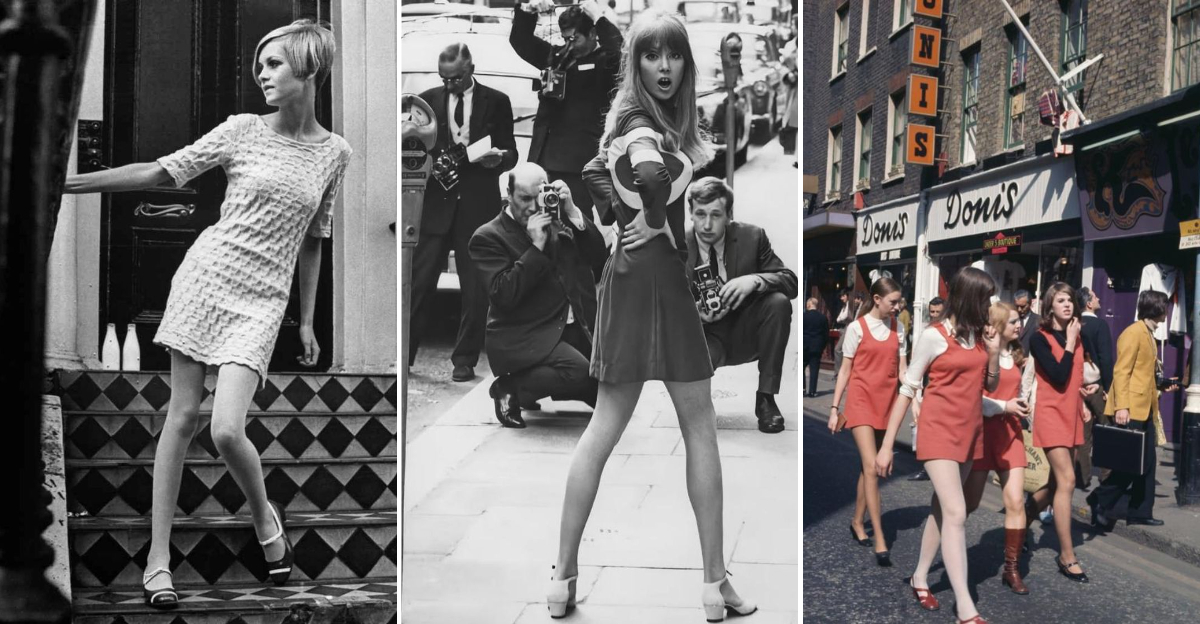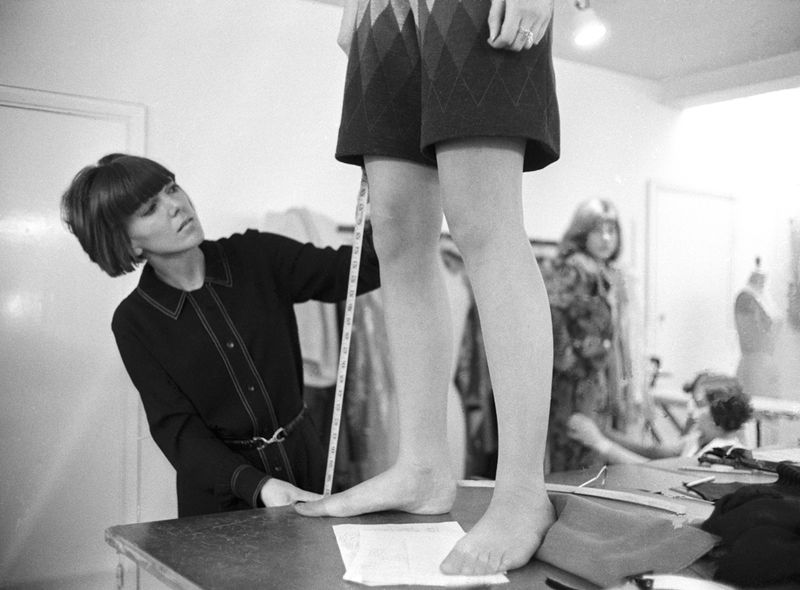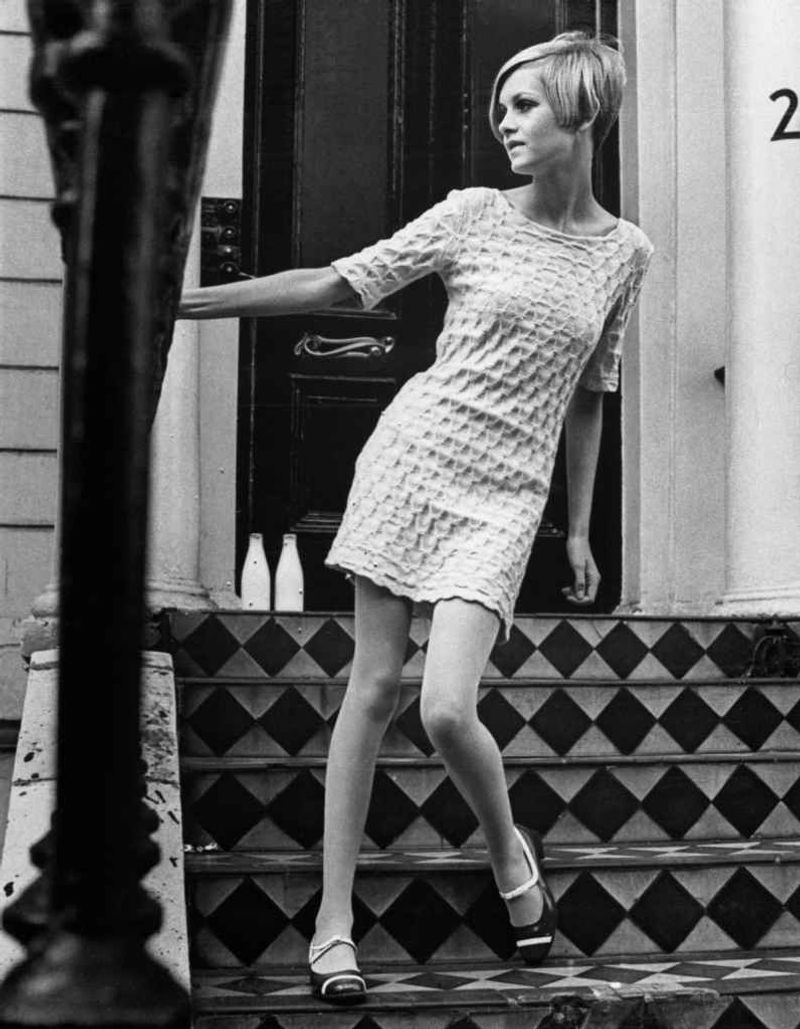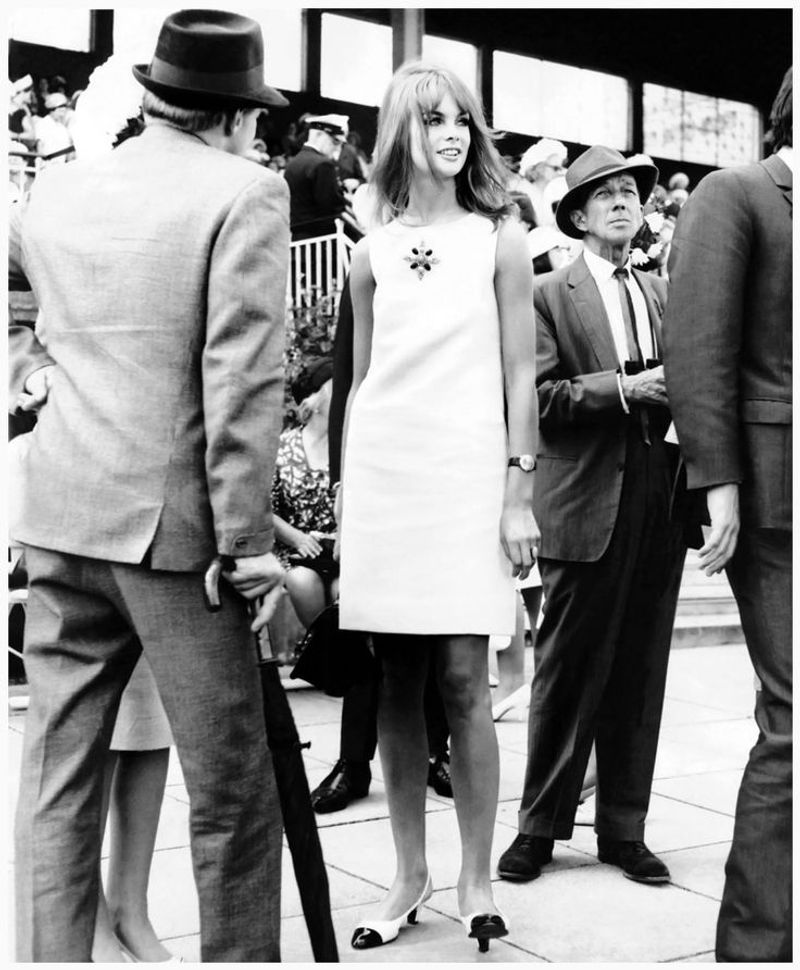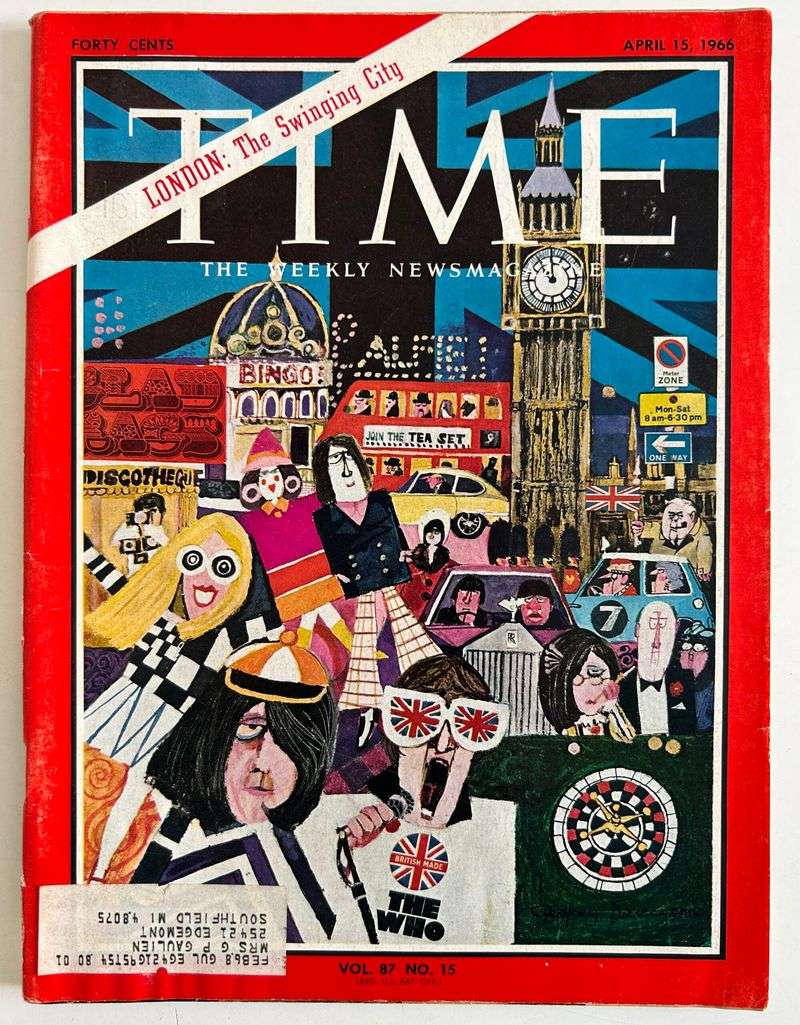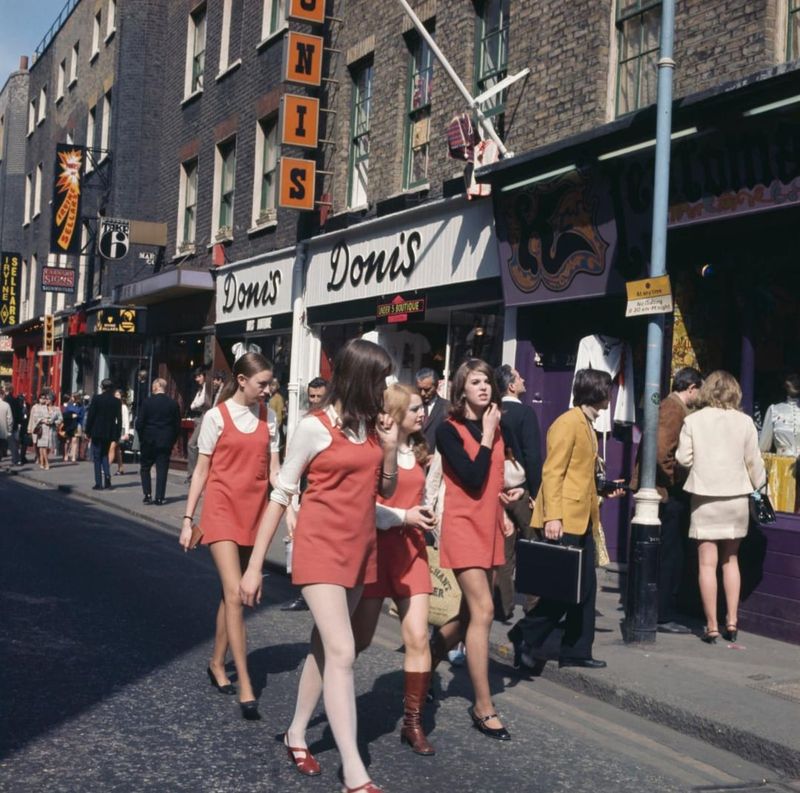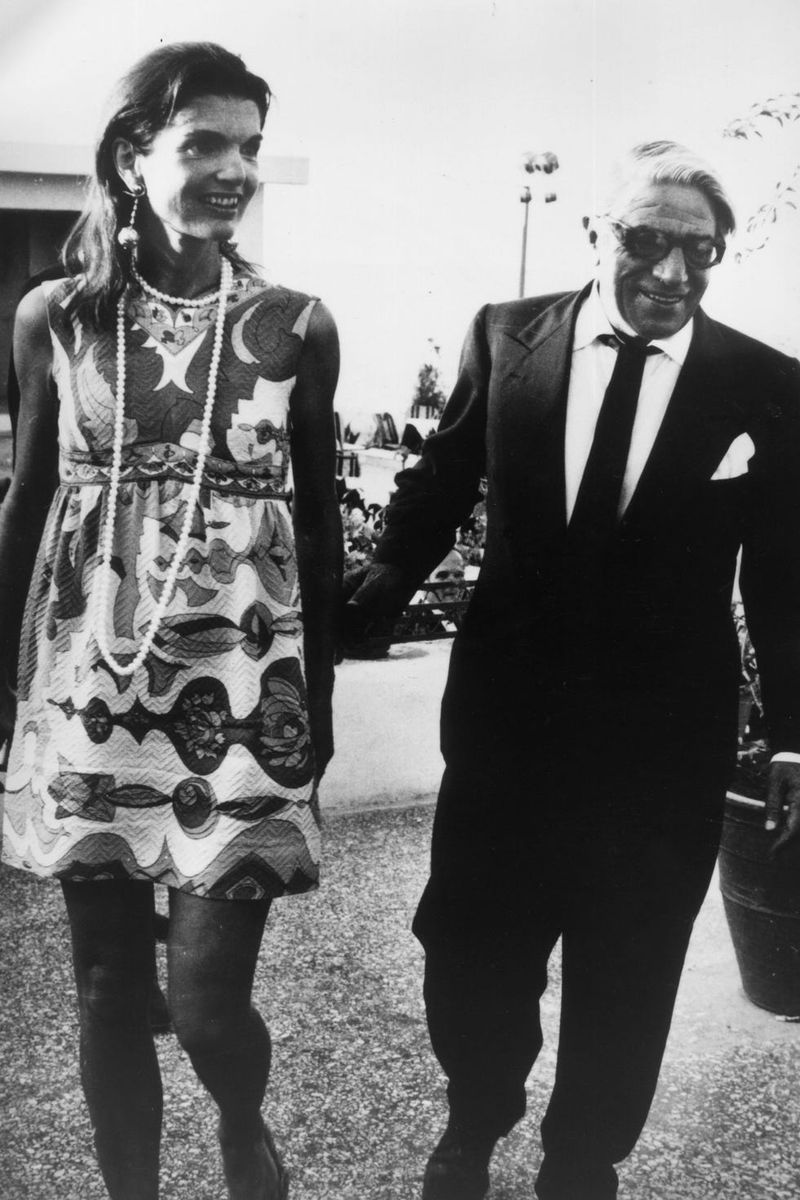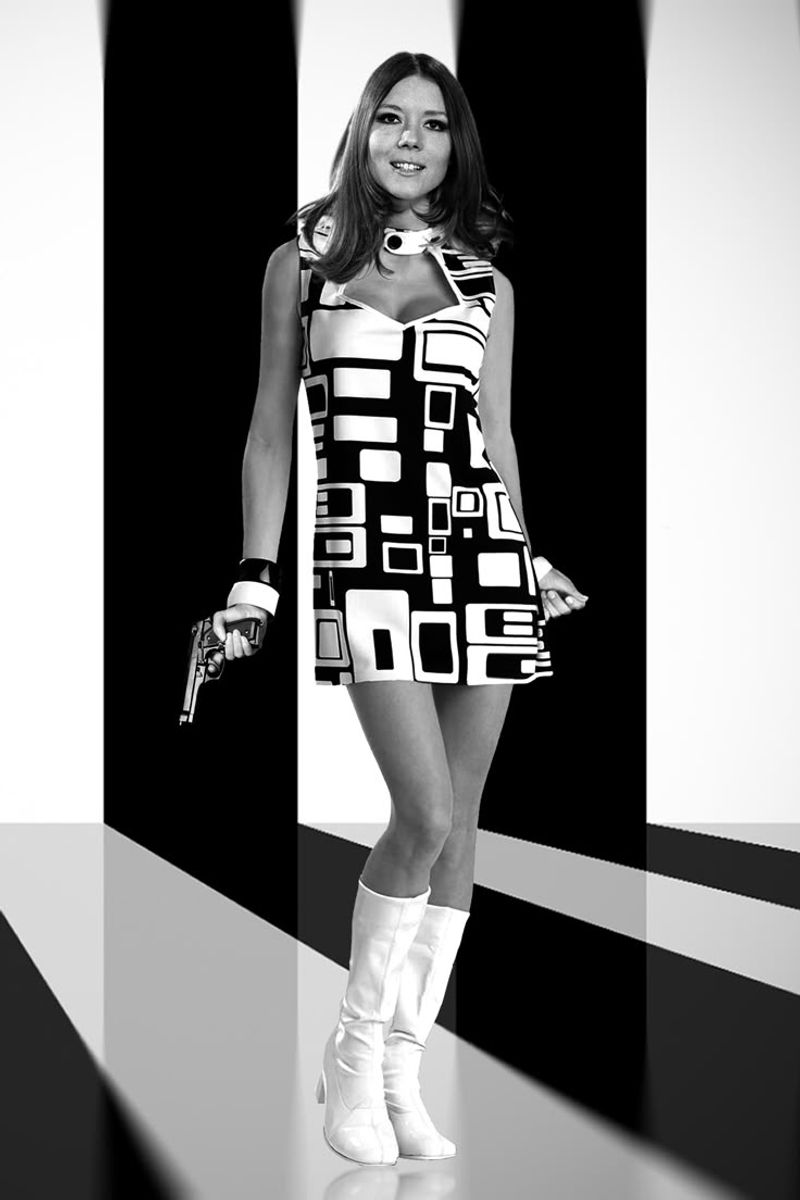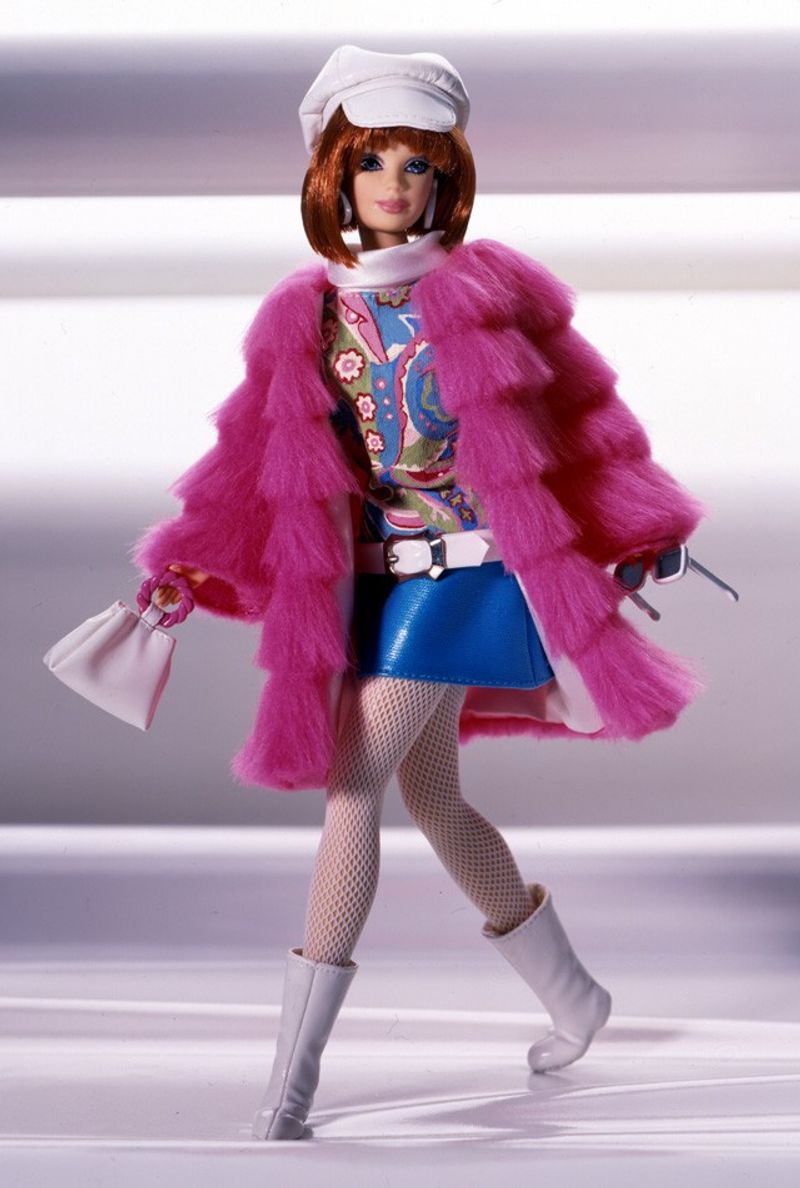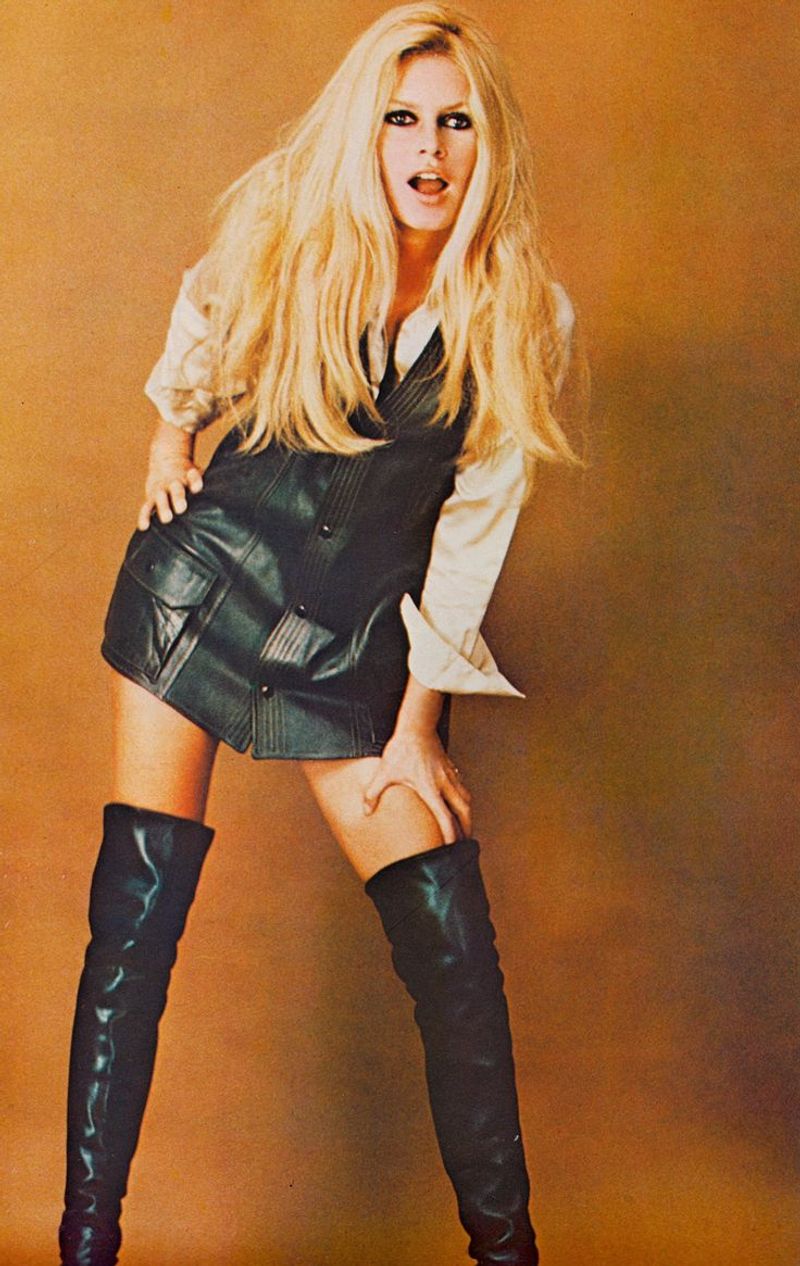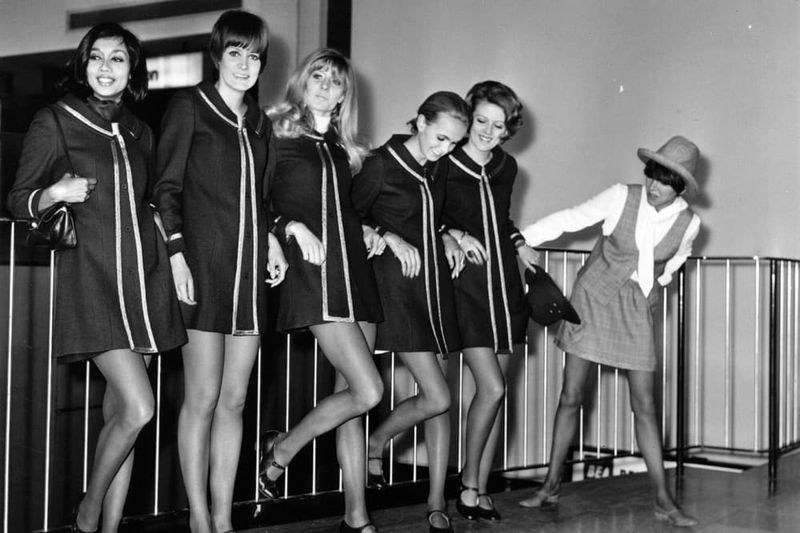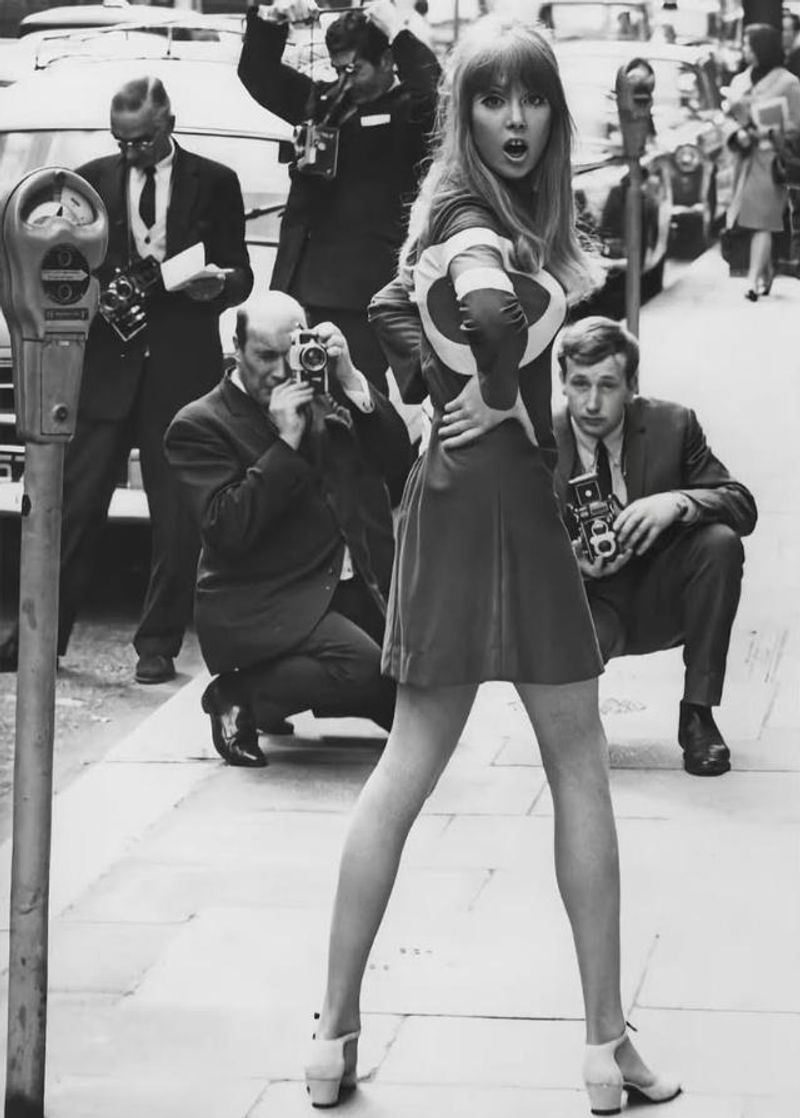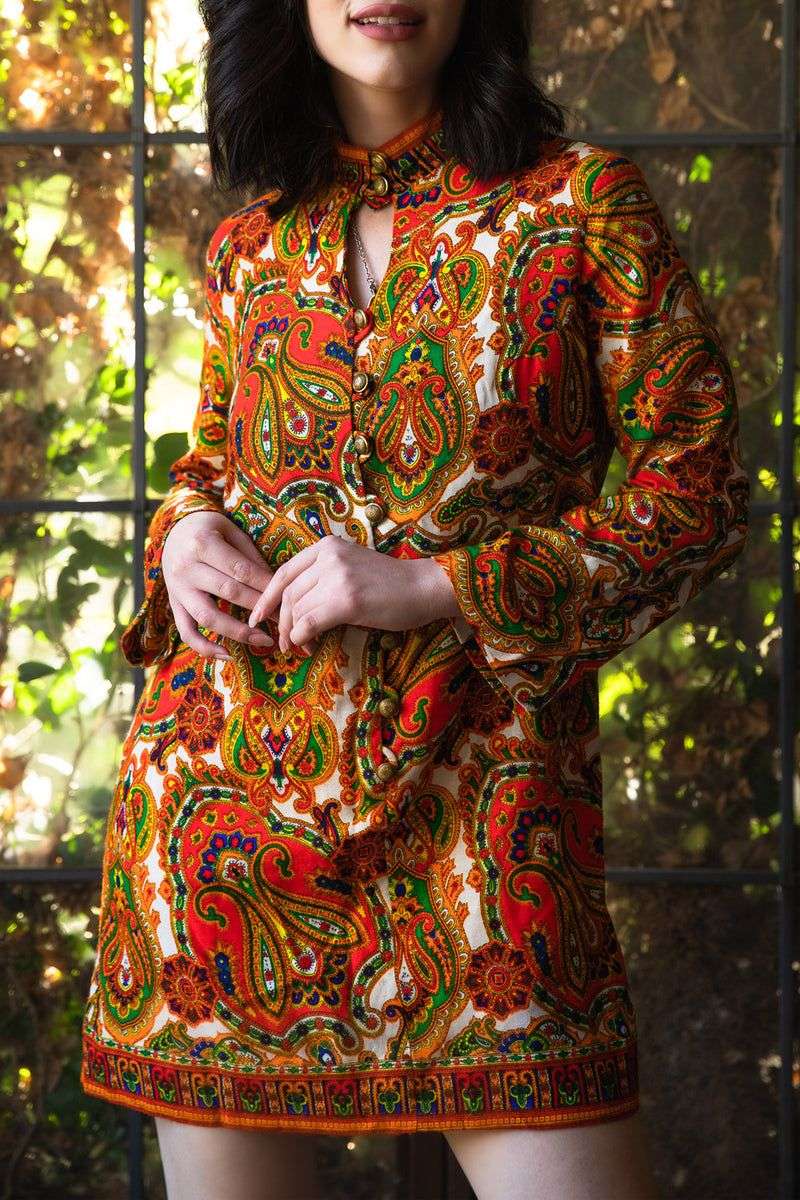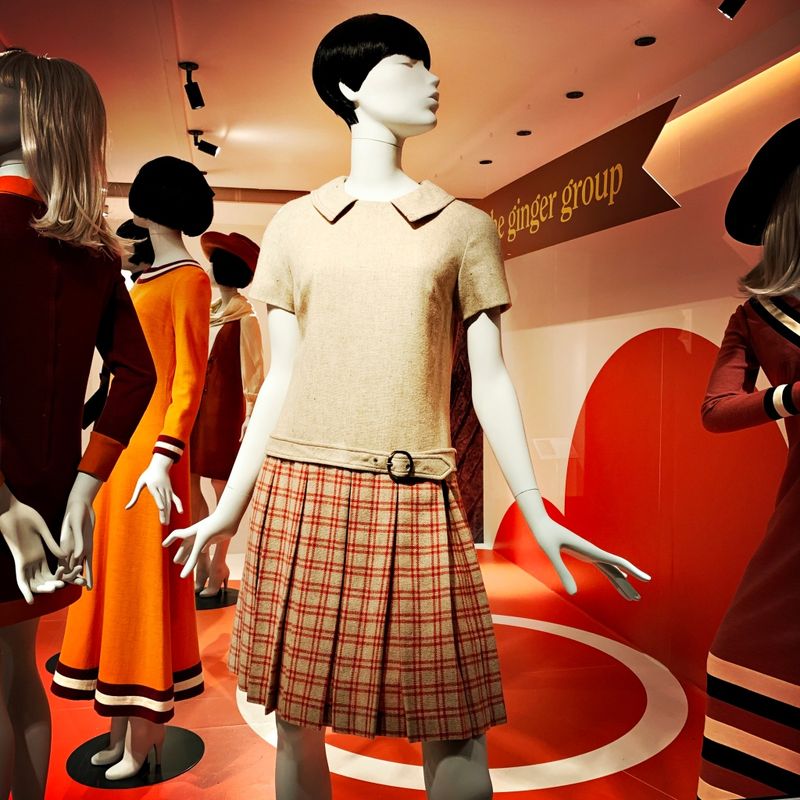The 1960s was a defining decade for fashion, particularly with the rise of the mini skirt. Symbolizing freedom and modernity, the mini skirt became an iconic piece that challenged social norms and celebrated youth culture. From London to Paris and the United States, this garment left an indelible mark on the fashion landscape. Fashion designers, models, and cultural icons all played a part in cementing the mini skirt’s place in history. Let’s explore 20 pivotal moments that not only elevated the mini skirt but also redefined fashion during the swinging ’60s.
1. Mary Quant Debuts the Mini Skirt (1964)
In 1964, British designer Mary Quant introduced the world to the mini skirt at her London boutique, Bazaar. Her pioneering designs offered hemlines above the knee, a revolutionary concept that would redefine women’s fashion globally. Quant’s mini skirts symbolized the growing youth culture and embodied the spirit of freedom and rebellion that characterized the 1960s. Her creations were not just about fashion; they represented a cultural shift, placing women’s legs at the center of attention. This bold move sparked a fashion revolution, forever changing how women dressed and how society viewed them.
2. Twiggy Becomes the Face of Mod (1966)
Twiggy, with her distinctive pixie haircut and striking eyes, became synonymous with the mod movement in 1966. At just 17, she revolutionized the fashion industry with her love for micro-mini skirts and bold patterns, capturing the essence of the swinging ’60s. Twiggy wasn’t just a model; she was the face of a cultural movement that celebrated youth and bold self-expression. Her look was a fresh departure from traditional fashion and helped propel the mini skirt to international fame, making it a staple in mod fashion.
3. Jean Shrimpton Shocks Melbourne in a Mini (1965)
In 1965, British model Jean Shrimpton caused a sensation at the Melbourne Cup by wearing a white mini skirt, bare legs, and no gloves. Her appearance defied the conservative dress codes of the event and captured the world’s attention. Dubbed “The Shrimp,” Shrimpton’s bold fashion choice showcased the mini skirt as a symbol of youthful defiance and modernity. Her daring look challenged societal norms and became a defining moment in the history of fashion, illustrating how a simple garment could make a powerful statement.
4. “Swinging London” Hits Time Magazine (1966)
In 1966, Time Magazine’s cover story on “Swinging London” encapsulated the cultural and fashion revolution of the decade. The feature included images of short skirts, bold prints, and a new wave of freedom sweeping across the city. The mini skirt wasn’t just a garment; it was a statement piece symbolizing the modernity and rebellious spirit of the era. This cover story highlighted the global influence of London’s fashion scene, positioning the city as the epicenter of avant-garde style and youth culture.
5. Carnaby Street Becomes the Style Capital
Carnaby Street in London emerged as the epicenter of youthful fashion during the 1960s. Known for its innovative boutiques and vibrant atmosphere, this iconic street became synonymous with the mini skirt trend. Stores offered skirts in neon colors, vinyl, and bold prints, catering to a new generation eager for change. The street became a symbol of the cultural shift towards more daring and expressive fashion choices. It was here that many young people found their style identity, making Carnaby Street a landmark in fashion history.
6. André Courrèges Takes the Mini to the Moon
French designer André Courrèges, known for his futuristic vision, brought a new dimension to the mini skirt in the 1960s. His use of white vinyl fabrics and geometric cuts gave the mini an avant-garde twist, reminiscent of space age aspirations. Courrèges’ collections turned heads in Paris, showcasing the mini skirt’s international appeal. His designs signified more than fashion; they were a nod to the era’s fascination with innovation and exploration, pushing the boundaries of traditional style and inspiring a new aesthetic movement.
7. The Beatles and Mini-Clad Fans Collide
The Beatles, with their groundbreaking music, attracted hordes of mini-clad fans, creating a striking visual of the 1960s cultural zeitgeist. Fans, often seen in ultra-short skirts, epitomized the rebellious and youthful spirit that defined Beatlemania. The mini skirt became part of this pop culture frenzy, symbolizing a break from tradition and an embrace of modernity. This fusion of music and fashion highlighted the close relationship between cultural icons and the mini skirt, making it an integral part of the decade’s identity.
8. Mod Girls Dominate Fashion Magazines
By the mid-1960s, fashion magazines like Vogue and Seventeen began showcasing young women in vibrant mini skirts, reflecting a shift from high fashion to street style. These publications embraced the mod look, featuring real young women with confidence and attitude. The mini skirt became more than a trend; it represented a new, dynamic approach to fashion that celebrated individuality. This shift in focus helped propel the mini skirt into the mainstream, cementing its status as a timeless fashion statement that continues to inspire designers today.
9. Jackie Kennedy Embraces the Mini (Late ’60s)
Former First Lady Jackie Kennedy, known for her sophisticated style, embraced the mini skirt trend in the late 1960s. Transitioning from her signature pillbox hats and suits, Jackie began stepping out in chic mini-length dresses. Her adoption of the mini skirt signified the trend’s acceptance into mainstream and high society. Jackie O’s elegant yet modern look demonstrated how the mini skirt could be both fashionable and refined, influencing countless women to adopt this fresh and youthful style.
10. Diana Rigg’s Avengers Wardrobe (1965–1968)
Diana Rigg, portraying spy Emma Peel in the TV series The Avengers, became a fashion icon with her sleek wardrobe. From 1965 to 1968, Rigg’s character sported mini skirts and catsuits, bringing the cutting-edge style of the 1960s to audiences worldwide. Her fashion-forward ensembles were not just about aesthetics; they embodied a sense of empowerment and modernity. The show highlighted the mini skirt as an integral part of the swinging ’60s, influencing fashion trends and inspiring women to embrace this bold new look.
11. Mini Skirts Hit the American High School Halls
By the late 1960s, mini skirts had infiltrated American high schools, challenging traditional dress codes and sparking debates. Teenagers, eager to embrace this new trend, began rolling up their hemlines, symbolizing a break from conservative norms. This fashion statement reflected the broader cultural shifts of the era, as young people asserted their independence and individuality. The presence of mini skirts in school halls marked a pivotal moment in fashion history, illustrating how a simple garment could become a symbol of rebellion and self-expression.
12. Mini Skirts Meet Go-Go Boots
The pairing of mini skirts with go-go boots became an iconic fashion combination in the 1960s. This dynamic duo was popularized by go-go dancers in clubs and on television, creating a look that was both modern and playful. The short skirts and tall boots complemented each other, offering a fresh and bold aesthetic. This trend was more than just a style choice; it was a reflection of the era’s carefree and energetic spirit, further cementing the mini skirt’s place in fashion history.
13. Barbie Gets Her Own Mini Skirt
In the 1960s, even Barbie embraced the mini skirt trend, with Mattel introducing outfits that mirrored the era’s fashion. The doll’s wardrobe featured stylish mini skirts, reinforcing the style’s dominance and appeal. Barbie’s mini skirts reflected societal changes and the growing acceptance of more daring fashion choices for women. This inclusion in Barbie’s wardrobe underscored the mini skirt’s influence, demonstrating how it permeated various aspects of culture, from fashion runways to children’s toys.
14. Mini Skirts in the Protest Movement
During the late 1960s, mini skirts became a symbol of empowerment within the women’s liberation movement. Activists wore them not just as a fashion statement, but as an assertion of autonomy over their bodies and image. The mini skirt represented freedom and defiance, challenging traditional gender roles and societal expectations. This powerful association highlighted the garment’s role in broader cultural and social movements, illustrating its significance beyond mere fashion and its lasting impact on women’s rights.
15. The Monkees and Mini Skirts on Prime Time
The Monkees television show in the 1960s played a pivotal role in spreading mini skirt culture in America. Featuring young women in bold prints, short skirts, and knee-high socks, the show captured the vibrant pop culture of the era. Mini skirts became synonymous with the youthful exuberance and style of the time, influencing viewers and fashion trends. The presence of the mini skirt in mainstream media illustrated its widespread acceptance and appeal, further cementing its iconic status in fashion history.
16. Brigitte Bardot in Minis and Messy Hair
French actress Brigitte Bardot became a symbol of 1960s glamour with her effortless style, often seen in mini skirts paired with her iconic messy hair. Bardot’s look embodied the spirit of the sexual revolution, celebrating freedom and natural beauty. Her fashion choices were more than mere trends; they reflected a cultural shift towards self-expression and authenticity. Bardot’s influence extended beyond fashion, inspiring women worldwide to embrace their individuality and the bold new styles of the era.
17. London Fashion Week Highlights the Hemline
London Fashion Week in the 1960s became a platform for showcasing the innovative designs that defined the era. Mini skirts took center stage on the runway, highlighting British creativity and boldness. Designers embraced shorter hemlines, presenting collections that pushed the boundaries of traditional fashion. This focus on the mini skirt during prestigious fashion events underscored its significance in the global fashion scene. London’s influence on style and culture was undeniable, cementing its reputation as a leader in the fashion world.
18. Pattie Boyd Inspires Rock-Star Style
Model and muse Pattie Boyd became an influential figure in 1960s fashion, often seen in mini skirts that inspired both musicians and fashion editors. Married to George Harrison and later Eric Clapton, Boyd’s style captured the essence of rock-star glamour. Her fashion choices resonated with the music scene, blending bohemian elements with modern chic. Boyd’s impact extended beyond her relationships, as she became a style icon in her own right, epitomizing the fusion of fashion and music that defined the era.
19. The Mini Goes Psychedelic
By the end of the 1960s, mini skirts embraced the psychedelic movement, showcasing vibrant colors, swirling patterns, and flower power prints. This evolution reflected the broader cultural trends of the era, as fashion became a canvas for self-expression and artistic exploration. The psychedelic mini skirt was more than a garment; it was a statement piece that captured the imagination and creativity of the time. This bold transformation highlighted the mini skirt’s adaptability and enduring appeal, solidifying its place in fashion history.
20. Mini Skirts Enter Museums and Fashion History
By the close of the 1960s, the mini skirt had achieved iconic status, earning its place in museums and fashion history. Exhibits dedicated to its evolution showcased the garment’s impact on society and culture. The mini skirt was no longer seen as merely a trend; it was a symbol of a transformative era that celebrated freedom and individuality. Its inclusion in museum collections underscored its significance as a turning point in 20th-century fashion, highlighting its enduring legacy and influence.
